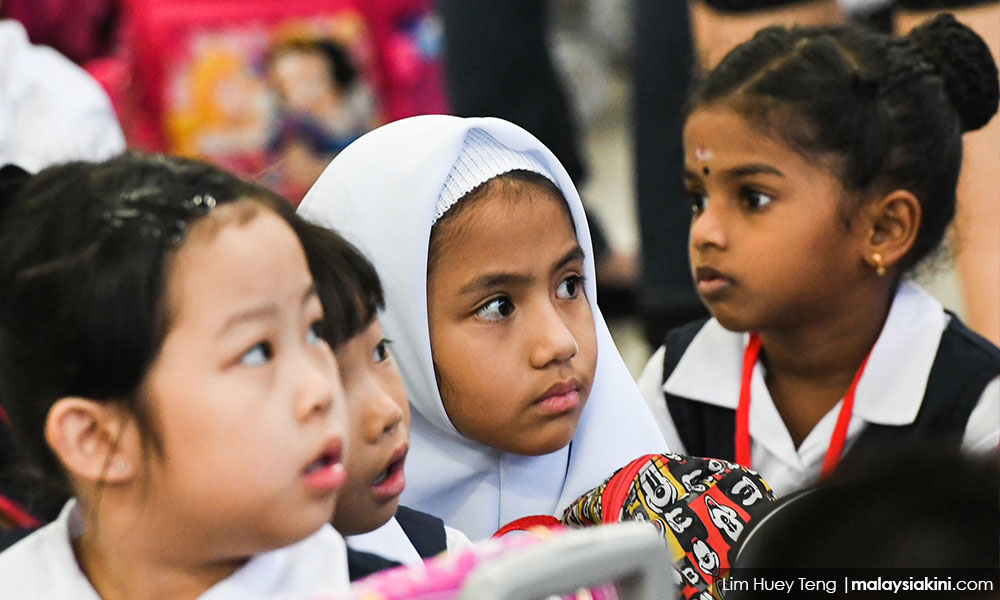LETTER | On the third day of Chinese New Year, I walk past a board in a community mall while I was on my way to a dining place. I was intrigued by the colourful masterpieces from a colouring contest that took place before the festive season.
Apparently, the contested children were given similar sheets of art paper, with an outlined portray containing three human figures, representing the main ethnicities in Malaysia. I took a closer look, noticed that these figures were skinned with colours of different intensity. Decisions on the choice of colours are in their hand, and the disparity of skin colour begins from the day they were brought to this world.
Last week, the National Unity 2021-2030 Blueprint was announced by Prime Minister Muhyiddin Yassin with three action plans to cater for the aspiration of understanding the concept of unity in the Malaysian context - creating a clear vision and aspirations to be achieved within 10 years as well as underlining comprehensive, targeted strategies and initiatives for unity.
These objectives are aimed to be achieved in the nearest 10 years via the designated action plans, which include inculcating unity as a tradition among Malaysians.
In fact, Rome was not built in a day. Unity, simply cannot be penetrated in our blood in 10 years’ time. There are several push-and-pull factors that certainly need to be rethought on unity. The context of unity per se is often ambiguous and multidimensionally defined.
Children are therefore taught to learn about unity via the perspective of disparity and disintegration in terms of ethnicity, from the lens of external resources rather than self-exposure. Textbooks, teachers, parents, media and society contribute to the cognition of their surroundings.

Unity can be simultaneously referred to as an integration process within a homogenous society and also a heterogeneous society. And with Malaysia being a multicultural nation, we are certainly eyeing unity in the latter context. Unity is a process. It should be cultivated in diversity and most importantly, it has to be organic.
Absorption of learning and knowledge serves the best period of time during the early stage in our children’s growth and life development. The period between conception and a child's second birthday, namely the first 1,000 days, is the best time to inculcate the concept of acceptance of what is different from us. It is the golden time when their brain, body and immune system grow and develop significantly.
Nonetheless, instead of allowing them to explore their horizon of looking at diversity and disparity, they are taught to differentiate ethnicity based on skin colours, unconsciously, of course.
Such stereotypical perception towards ethnicity begins to submerge in their mind, followed by the emerge of segregation in the socialisation process with people from various backgrounds when they enter school life. As a result, the fragmented idea of unity starts to root in subtle ways and rot when they enter adulthood.
For 'unity in diversity' to become a tradition...
The quota that “children don’t hear us, they imitate us” makes a pivotal point here. Unity should be instilled from home as early as the age of a toddler. There is always a need to be aware of the language used in describing others when parents opt to deliver messages to the little minds. Through behavioural interpretation, children can easily receive the messages in a way that might not be the best for them.
On the other side of the coin, such effort should be worked hand-in-hand from all parties in light of the nation-building direction and unity blueprint. With all the existing fluidity in political turmoil, widened partisan divide on political values, dual nature of partisan prejudice and the manipulation of racial issues in the political game are all the real-life examples of failure in demonstrating unity among the people at the top level. How then could it be possible for “unity in diversity” to become a tradition among Malaysians?
Before we put unity on a curated blueprint, we should instil this value into our blood, by implementing affirmative actions to discriminate bigoted individualistic mindsets among ourselves.
The subconscious obstinate and unreasonable attachment on biases toward disparity should be eradicated from the root course among the young generation today. Children should not only be taught to tolerate one another, but to wholeheartedly and naturally accept all differences with empathy and kindness.
The older generation should learn from history and not allow similar mindsets to prevail among the younger generation. It is hard, but shall begin from now. A blueprint does not ensure unity among the rakyat, but the people themselves are the blueprint for a bigger unity landscape in this country.
So, how about only one colour for all human beings?
The views expressed here are those of the author/contributor and do not necessarily represent the views of Malaysiakini.

